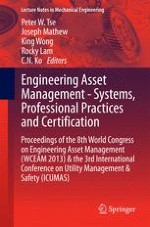2015 | OriginalPaper | Chapter
Study of Li-Ion Cells Accelerated Test Based on Degradation Path
Authors : YunLong Huang, XiaoGang Li
Published in: Engineering Asset Management - Systems, Professional Practices and Certification
Publisher: Springer International Publishing
Activate our intelligent search to find suitable subject content or patents.
Select sections of text to find matching patents with Artificial Intelligence. powered by
Select sections of text to find additional relevant content using AI-assisted search. powered by
